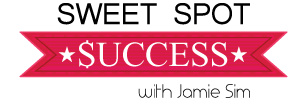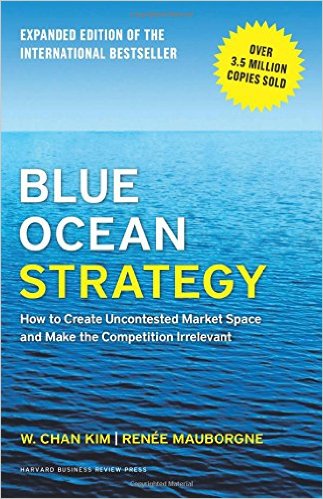7 Smart Pricing Strategies to Exponential Sales
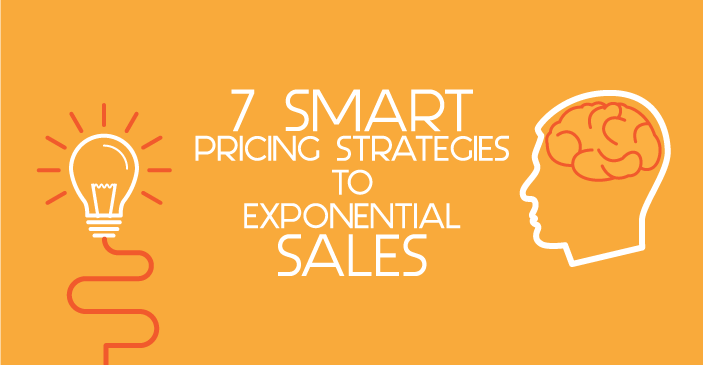
There are a varieties of pricing strategies a business can use to set its price. The use of each pricing strategies can be utilized depending on each company’s marketing goal.
However, many entrepreneur and marketer overlook on this area when it comes to setting a price. In today competitive marketplace, the challenges of setting a price is even steeper as before and in this modern days, it works even better when you apply more than 1 pricing strategy for your product/service and pricing intelligently is smarter than choosing the right pricing strategies.
In today’s article, I will be sharing with you 7 smart pricing strategies you can consider when pricing for your product or services. Nevertheless, before I go through the 7 pricing strategies, it is important to understand that factors such as competitor pricing, target market, marketing goals and objective, positioning strategy, fixed and variable cost will cause an entrepreneur and marketer to change its pricing strategies at any time.
Now, let’s take a look at the following pricing strategies as part for your consideration when evaluating your marketing strategy.
1. Psychological Pricing:
Traditionally, lots of businesses used to charge item at $9.90 instead of $10. The idea is to make customer feel that the product is cheaper than it is. But these days, consumers are getting smarter about the perceived price different between $9.90 and $10. They know that it is the marketing ploy and closing the deal is tougher than before. Hence, most marketer prefer to price item at $9.70 or $9.50 instead of $9.90 these days.
This is pretty straight forward and you will often see this pricing strategy in the FMCG industry and the retail industry. However, this pricing strategy has become so common that consumer hardly consider as a factor when purchasing for a particular product. Thus, the consumer often end up compare your brand with other brands which are display next to yours. For that reason, many smart marketer start to offer a range of products with different added value.
Let’s take a look at this example;

From the above, there’s 3 brands available for a customer to decide on, which is very competing.
Next, you have 3 different value-based product set at different pricing to your brand. It provides more choices for a customer to choose from as compare to other brands. Therefore, psychological pricing is being trade off and value is seen as a consideration factor instead when choosing for a particular product. And hey, you out-beat the other rivals as you provide more choices for the customer. Now, the customer is concentrating his/her choices within a particular brand which you can set at a different price range.

2. Competition Pricing:
Usually this strategy is used when the competition is very strong in the market so most firm will try to offer a price match. To compete with the rest of the competition, usually a non-price strategy such as providing longer warranty, customer service or free delivery will be used.
Such examples are in the home appliances, computer and home furniture industry.
Similarity, this strategy has become very common in the marketplace and very often these non-price strategy are man hours which means companies are inuring additional expenses. Thus, an alternative strategy many smart marketer has been using is to collaborate with credits card company or to introduce membership card.
You see, in the home appliances and furniture industry, these products can be quite expensive to young new home owner as they are buying almost everything new. These purchase can be quite painful to them especially to their pocket so in order to shift their pain point in the buying process, smart marketer can shift their pain by offering credit card installment plan with interest free instead. So instead of paying a full lump sum of $1128 for a furniture, they pay $47 monthly installment for the next 2 years. This strategy can be very well used for highly price item.
Courts has done one such move by offering flexi-plans in Singapore.
There’s one particular interesting smart move by Kopitiam food court which offer the Kopitiam card in Singapore. What happen is you top up the value in your card at the kiosk machine to enjoy cashless dining at any Kopitiam outlet in Singapore. What’s more enticing is customer gets a small discount when they use the card to pay. If you pay your meal by cash, you need to pay it full price. So what benefit does this do for Kopitiam company? Well, just think of how bank does its business… they can invest the money with the advanced money collected from us. The company and the consumer are being benefited. How Smart.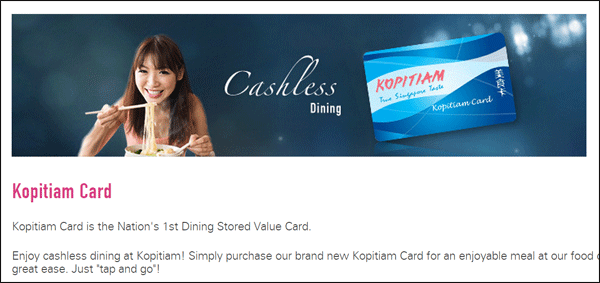
3. Penetration Pricing:
When one business try to enter a market to gain market share and sales, they will want to price it low first and once the businesses gain the market share, they will increase the price. However, not many startup companies are able to use this strategy unlike big corporation with huge budget to spend on.
Interestingly, startup company Xiaomi, the “Apple Phone of China” has gave us a short lesson in the economics of pricing to penetrate in its market.
You can read more here.
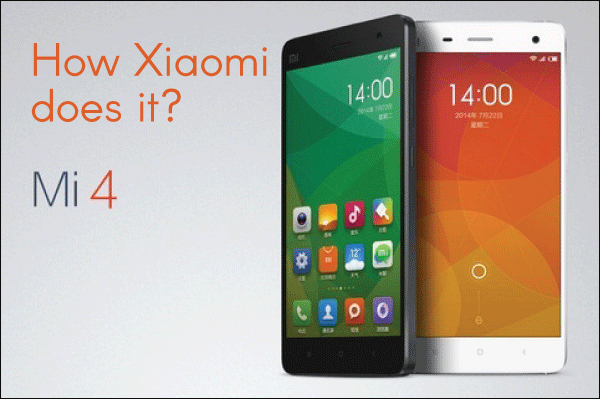
4. Skimming Pricing:
A business can enter the market by setting higher price if they have little or no competition. This is so as they have a significant competitive advantage such as innovative products like Ipad, Sony Playstation. When the product is first launched, only innovator or early adopter would be interested to purchase it as price is not a main concern to them at all, otherwise only customer who could afford to pay for the high price for the new technology would be able to purchase it.
In the next few years, company will reduce the price to attract new buyers such as the early majority and the late majority, at times the price will continue to fall to attract the laggards. This way, the company will maximum the amount of revenue from various segments in the market.
On the below graph, you can picture the relation between product adoption life cycle and product life cycle.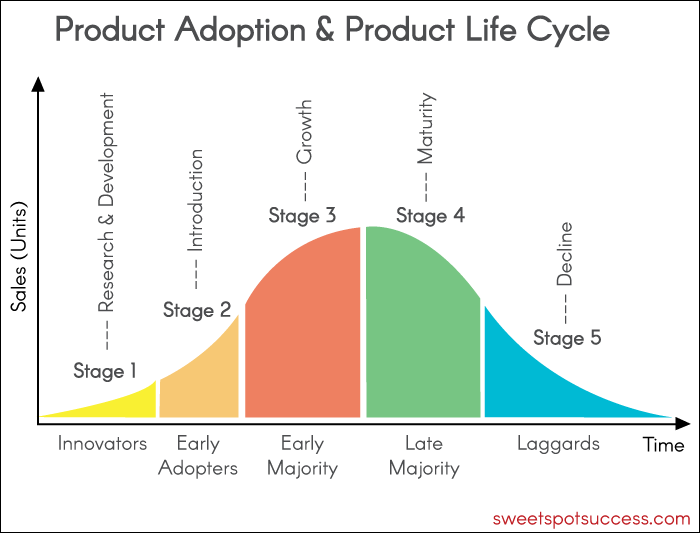
However, there are a few conditions that must fulfill before using skimming pricing. There must be enough buyers wanting for the product at that price and that competitors must not be able to penetrate into the market easily to undercut the high price. And of course, the product quality, image and branding must support for its high price.
Marketer should also note that R&D must proceed for the next product series before the previous product life cycle dies down. This is especially so in the fast paced technology industry like the mobile phone.
5. Bundle Pricing:
A business can bundle up similar item to sell so they can attract customer in view that it will save them more when they buy in bulk. This strategy is usually used in supermarket such as can drinks or cleaning detergent. You will also often see businesses such as fast food chain restaurant or video game console that uses this strategy. They will bundle up different items together and sell it as a package to attract customer in buying a complete set that will cost them less.
Below are some such examples:
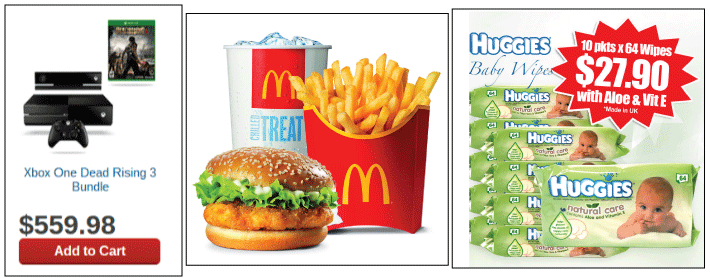
Marketer love to use this smart strategy because they very well know that a customer would not just want a burger when he/she is hungry but a complete meal set instead whereas a gamer would not just want to buy a new game console machine but some games and probably another set of controller. Interestingly, in the FMCG industry, where big families would prefer to buy a bundle of hand soap, toothpaste, kitchen towel etc instead.
Another smart move made by Macdonald is their upsize meal set with a top up of 50 cents, where the big eater would enjoy a larger pack of fries and drink. So probably you may want to consider upsell while using the bundle pricing strategy.
6. Premium Pricing:
This strategy is all entrepreneur and business’s dream where a business can price their product at a very high price but only if they have a unique selling proposition (USP).
This means an unique product, where the product has a special feature that is protected by patent or design that is copyright reserved. Hence, it enables business to charge at a premium price.
High quality product: When business designed high superior quality product for its customer which involved higher cost, thus charging a higher price.
Luxury brands: Besides charging a premium price, a business need to have a consistent brand message through its advertising channel to build strong brand equity. Because most of the time, consumers are buying the brand for its intangible positive feeling.
Apple provides all 3 USP to its customer which results them to charge at a premium price. A differentiate strategy that is hard to achieve which I believe requires a very strong regulatory, R&D and marketing team.
I highly recommend “Blue Ocean Strategy” book if you are keen to learn more. Instead of fighting in a bloody red ocean with your rivals. Blue Ocean Strategy presents a systematic approach to make the competition irrelevant which also outlines the principles and tools for any companies to create and capture their own blue oceans.
7. Captive Product Pricing
This strategy is a two part pricing strategy. The company first offer its main product at a low price, but high prices on captive product instead. Captive product is item that must be used along with the main product. For instance, the video game console can only used with the games and the printer can only be used with the ink cartridge.
Customers are attracted with the low price main product which is the company intention. Because they know they will make a profit off from the captive products, which are essential to use it along with the main product.
This strategy can also work very well in service industry like theme park, you will realized that customer are paying the admission charge for the rides and attractions. The real profits they are actually making are food and drinks purchased by the customer which is price higher as compare to other outlet outside the theme park. The smart marketer knows that the demand for food and drinks become necessary as the tired visitor will go to the nearest restaurant to get for it.
In a game “The Sims” theme park game, it challenges player to make money operating the theme park.
My childhood favourite game.
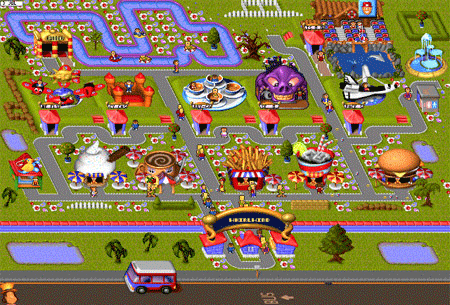
When it comes to setting price, it’s more than choosing the right pricing strategy, but pricing intelligently instead.
